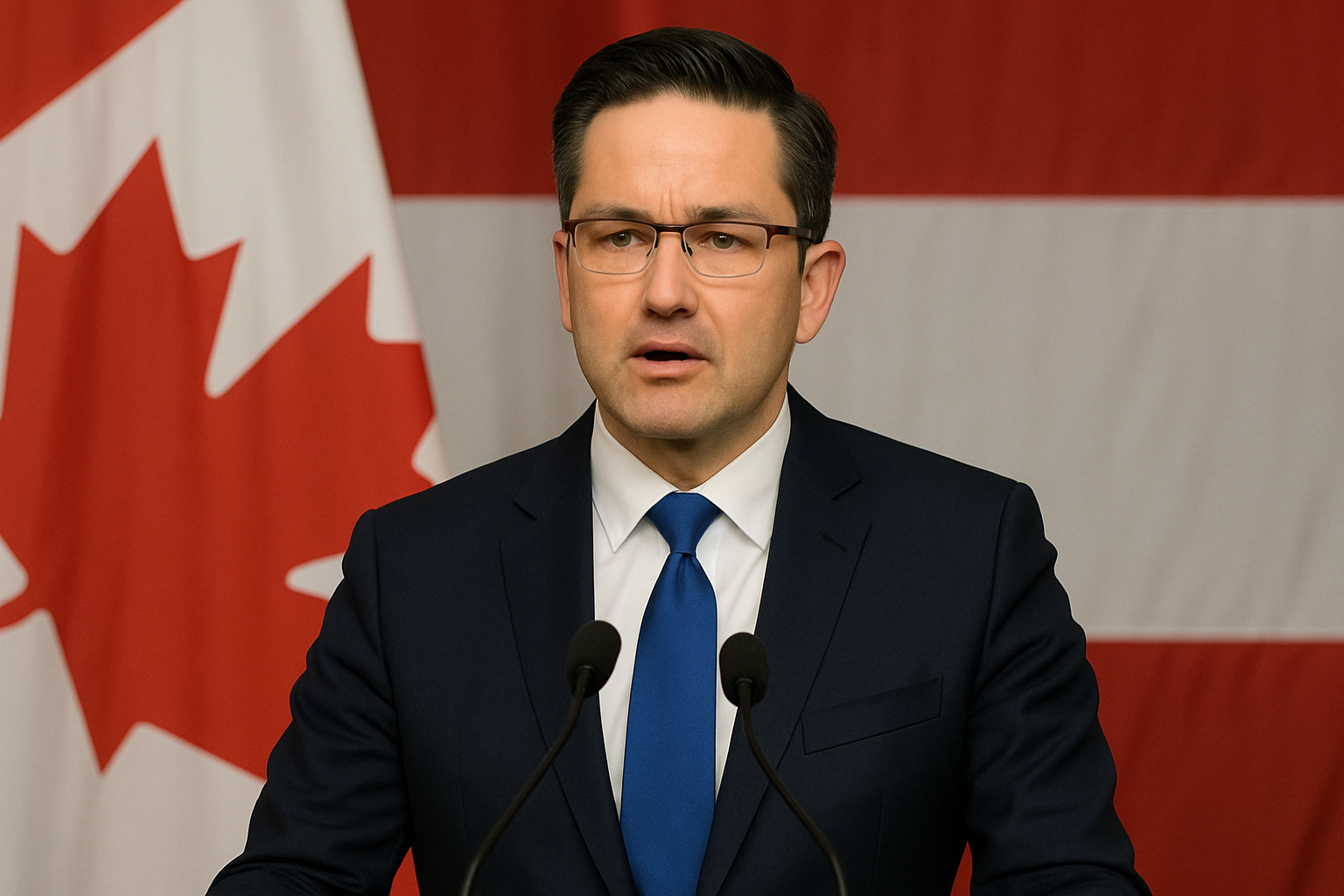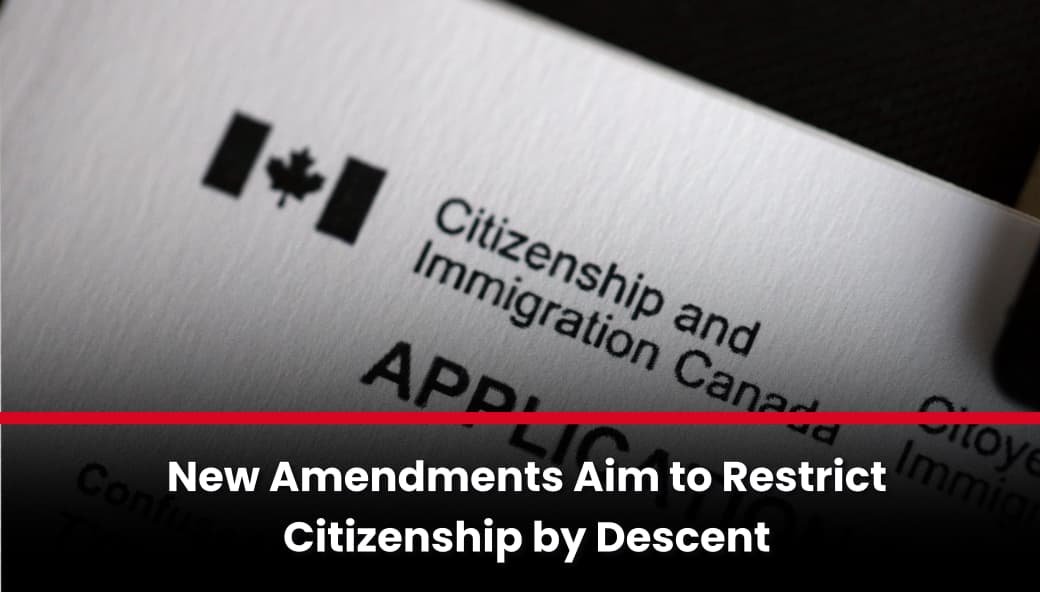Conservative Party leader Pierre Poilievre is calling for “severe limits” on Canada’s population growth, blaming what he describes as uncontrolled immigration for overburdening public services and contributing to rising crime.
Book Your Consultation for Canadian Immigration
Speaking at a press conference in the House of Commons on June 10, Poilievre delivered sharp criticism of the Liberal government’s immigration policies. He claimed that rapid population increases, driven by lax immigration controls, have overwhelmed housing, healthcare, and border enforcement systems.
“We want severe limits on population growth to reverse the damage the Liberals did to our system,” Poilievre stated. However, he offered few specifics and declined to answer follow-up questions, leaving his proposed policy direction largely open to interpretation.
Canada’s Population Surge
According to Statistics Canada, Canada’s population grew by nearly 9% from 2021 to 2024, reaching 41 million in March 2024 — the fastest growth in more than 60 years. This surge was primarily fueled by immigration, with recent years seeing 500,000 new permanent residents annually under former Prime Minister Justin Trudeau. Temporary residents, including international students and temporary foreign workers, now make up 6.5% of the total population.
While immigration has brought economic benefits and enriched Canada’s cultural fabric, it has also created pressure on urban infrastructure, particularly in major cities like Toronto and Vancouver.
In response, the Liberal government announced a gradual scaling back of immigration targets in 2024. The number of permanent residents is set to drop to 395,000 in 2025, with further reductions planned for 2026 and 2027. Temporary resident admissions will also be capped at 5% of the total population by the end of 2026.
Carney Backs “Sustainable” Immigration Levels
New Prime Minister Mark Carney has endorsed these reductions, signaling a continuation of Trudeau-era policies. In a mandate letter to his cabinet, Carney emphasized the need for “sustainable” immigration levels that balance economic needs with public service capacity.
However, Carney’s administration has not yet responded directly to Poilievre’s remarks, leaving the Conservative leader’s comments to dominate recent headlines.
Conservative Vision Echoes Harper-Era Approach
Poilievre’s comments align with the Conservative Party’s platform, which advocates for a return to immigration levels seen under former Prime Minister Stephen Harper. During Harper’s tenure, Canada admitted between 240,000 and 285,000 permanent residents annually. These policies prioritized economic-class immigrants and family reunification while emphasizing stricter border enforcement.
It remains unclear whether Poilievre intends to target specific immigration streams or propose a general reduction across the board. The ambiguity has led to speculation about whether he seeks an absolute reduction or a population growth rate scaled to current demographic realities.
Immigration: A Divisive National Debate
Canada’s immigration policy has long been seen as a cornerstone of its identity — contributing to labor force growth, innovation, and cultural diversity. Yet, the rapid pace of population growth has intensified debate over the country’s ability to absorb new arrivals without compromising the quality of life.
Supporters of current immigration levels argue that newcomers play a critical role in offsetting Canada’s aging population, fueling economic growth, and filling labor shortages in key sectors such as healthcare, construction, and technology. International students, in particular, contribute billions annually through tuition and living expenses.
Critics, however, echo Poilievre’s concerns, pointing to housing shortages, long wait times for public services, and what they perceive as insufficient border control. Poilievre has linked high immigration levels to increased illegal activity, though experts caution that Canada maintains one of the most regulated immigration systems globally, with limited evidence of widespread criminal infiltration.
Public Reaction and Political Stakes
Reactions to Poilievre’s remarks have been swift and divided. On social media, some praised his tough stance, citing affordability and resource concerns, while others condemned it as inflammatory and out of step with Canada’s inclusive values.
“Finally, someone is addressing the elephant in the room,” one supporter posted on X. Another user countered, “Poilievre’s fear-mongering ignores the economic and social contributions of newcomers.”
With the 2025 federal election approaching, immigration is likely to become a central campaign issue. Poilievre is positioning the Conservatives as the party of restraint, hoping to capitalize on public frustration over rising living costs and overstretched public services. The Liberals, meanwhile, must balance their immigration record with growing demands for sustainability.
The New Democratic Party (NDP) and other political groups have yet to outline their positions in detail, but their responses could significantly influence the national discourse.
Global Context: A Shift Toward Restriction?
Canada’s immigration debate mirrors broader global trends. Across Europe and the United States, governments are tightening immigration policies amid public concern over infrastructure, security, and cultural cohesion.
Still, Canada’s demographic challenges — including a declining birth rate and aging population — make immigration an essential component of its long-term economic strategy. Experts warn that overly aggressive cuts could worsen labor shortages and undermine growth.
What Lies Ahead?
As public scrutiny of immigration policy intensifies, both the Liberal and Conservative parties face mounting pressure to provide clear, evidence-based plans. Carney’s commitment to “sustainable levels” has set the tone, but whether this approach can withstand political and public pressure remains to be seen.
Poilievre’s demand for “severe limits” has undoubtedly ignited a national conversation — but unless the Conservatives outline specific targets and strategies, the debate will remain dominated by speculation and rhetoric.
Canada at a Turning Point
Canada stands at a critical juncture. The rapid population growth of recent years has delivered undeniable benefits — and equally undeniable challenges. As parties stake out their positions, the nation must grapple with complex questions about growth, stability, and identity.
The decisions made now will shape the future of immigration in Canada — and define the country’s social and economic landscape for decades to come.





